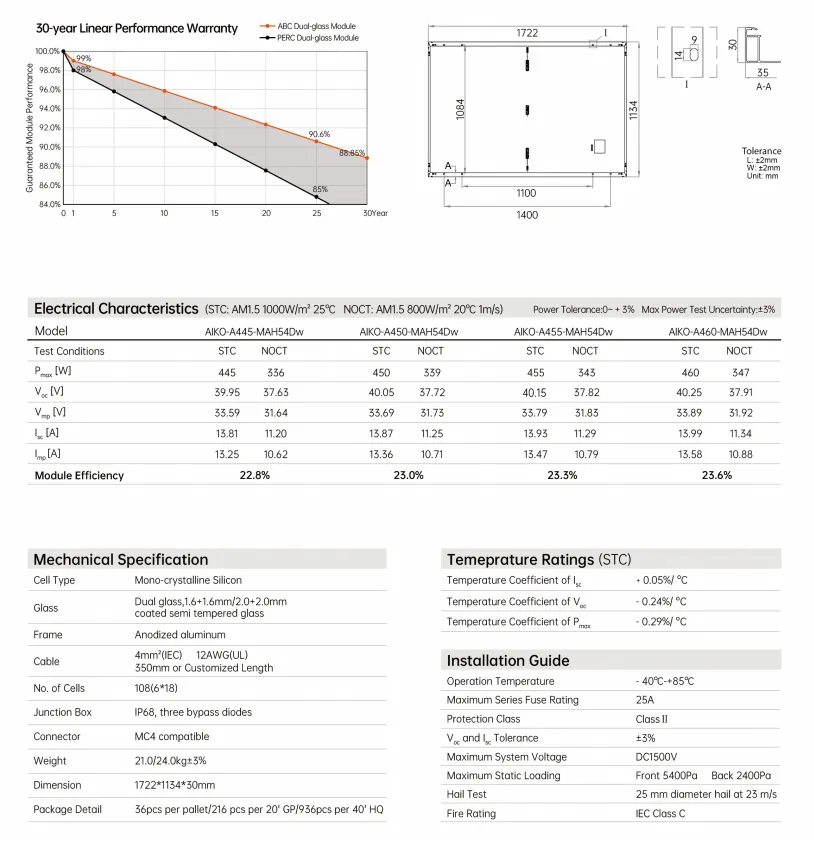bifacial solar panel cost
Understanding the Cost of Bifacial Solar Panels A Comprehensive Guide
The solar energy industry has witnessed significant advancements over the last few years, making solar power more accessible and efficient for both residential and commercial applications. One of the most promising innovations in solar technology is the bifacial solar panel. Unlike traditional monofacial panels that only capture sunlight from one side, bifacial panels can harvest solar energy from both their front and rear sides. This dual functionality can potentially enhance energy output, but what does it mean for your investment? This article delves into the costs associated with bifacial solar panels and the factors influencing these costs.
What Are Bifacial Solar Panels?
Bifacial solar panels consist of solar cells sandwiched between two layers of transparent material, usually glass. This design allows light to penetrate from both sides, enabling the panels to absorb direct sunlight and reflected light from surrounding surfaces. The efficiency of bifacial panels is particularly beneficial in specific environments, such as snowy or sandy areas, where reflected sunlight can contribute significantly to energy generation.
Cost Compared to Traditional Panels
The cost of bifacial solar panels generally ranges from 10% to 20% higher than their traditional counterparts. The average cost of traditional solar panels can be around $0.70 to $1.00 per watt, while bifacial panels might fall between $0.80 and $1.20 per watt, depending on the technology used, manufacturer reputation, and the region of installation. While this initial investment may seem steep, you must consider the long-term benefits and potential savings.
Factors Influencing Bifacial Solar Panel Costs
1. Material Quality The materials used in the manufacturing of bifacial solar panels significantly influence their costs. High-quality materials often lead to higher efficiency and durability, but they also increase production costs. When choosing bifacial panels, it’s important to balance upfront costs with long-term performance.
bifacial solar panel cost

2. Installation Requirements Bifacial solar panels often require specific installation techniques to maximize their dual-sided energy absorption capabilities. For instance, installing them on raised structures or reflective surfaces can enhance efficiency but may raise installation costs. Hiring experienced professionals for installation can also impact the overall investment.
3. Location The geographic location where the bifacial solar panels are installed affects both their effectiveness and cost. Areas with high albedo (reflective surfaces) can enhance performance, leading to better returns on investment. In contrast, regions with little sunlight may not experience the same benefits.
4. Incentives and Rebates Government incentives, tax credits, and rebates can help offset the upfront costs of solar installations, including bifacial panels. Research local and federal programs that support solar energy investments, which can significantly reduce net costs.
5. Long-term Benefits While bifacial solar panels come with a higher initial price tag, their exceptional energy generation capabilities can lead to increased savings over time. Bifacial panels can achieve 10% to 20% more energy output compared to traditional panels, providing a quicker return on investment in terms of energy savings.
Performance and Reliability
Investing in bifacial solar panels offers not just potential savings but also superior performance. Most industry-leading manufacturers provide warranties of up to 25 years for bifacial panels, indicating confidence in their longevity and reliability. Moreover, advancements in solar technology continue to improve the efficiency ratings of bifacial panels, making them a sound investment in clean energy.
Conclusion
As the demand for renewable energy rises, bifacial solar panels present a compelling option for those looking to harness solar power. While the upfront costs are higher than traditional solar panels, the potential for increased energy production and long-term savings makes them an attractive choice. When considering bifacial technology, it’s essential to evaluate your specific needs, geographic location, and potential installation challenges. By understanding the costs associated with bifacial solar panels, you can make a well-informed decision that aligns with your energy goals and helps contribute to a sustainable future.
-
Unlocking Energy Freedom with the Off Grid Solar InverterNewsJun.06,2025
-
Unlock More Solar Power with a High-Efficiency Bifacial Solar PanelNewsJun.06,2025
-
Power Your Future with High-Efficiency Monocrystalline Solar PanelsNewsJun.06,2025
-
Next-Gen Solar Power Starts with Micro Solar InvertersNewsJun.06,2025
-
Harnessing Peak Efficiency with the On Grid Solar InverterNewsJun.06,2025
-
Discover Unmatched Efficiency with the Latest String Solar InverterNewsJun.06,2025







